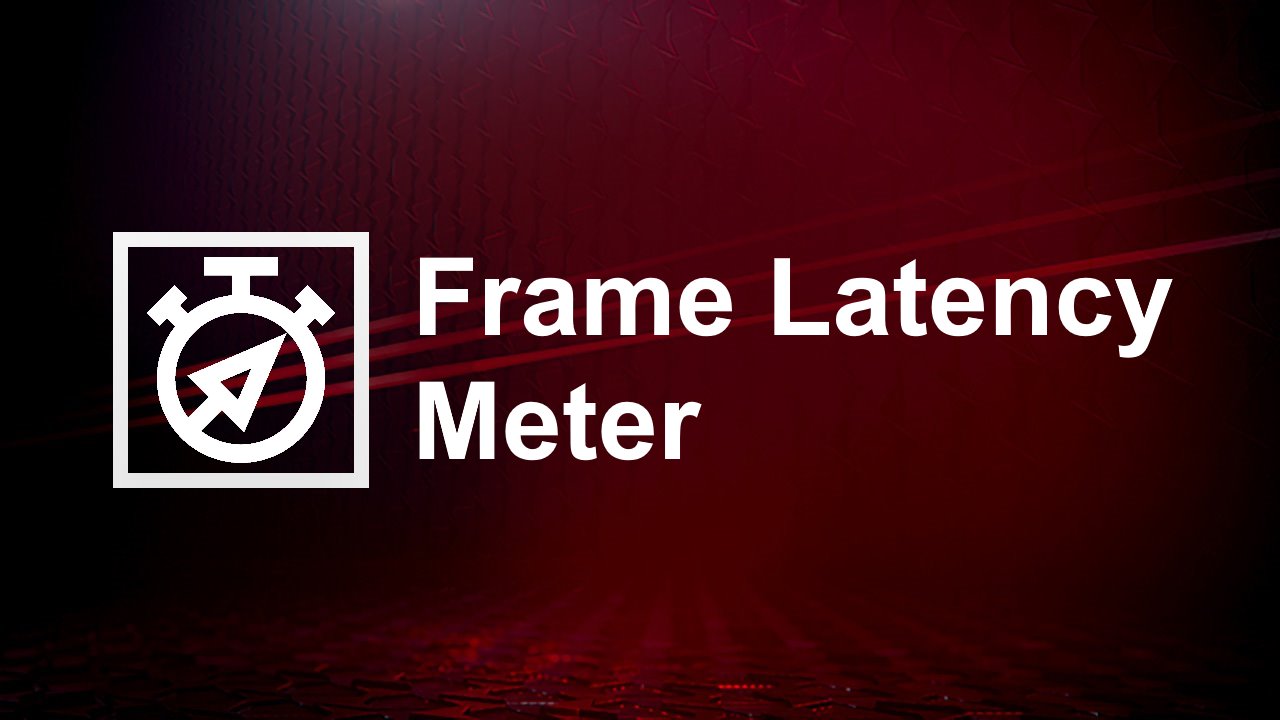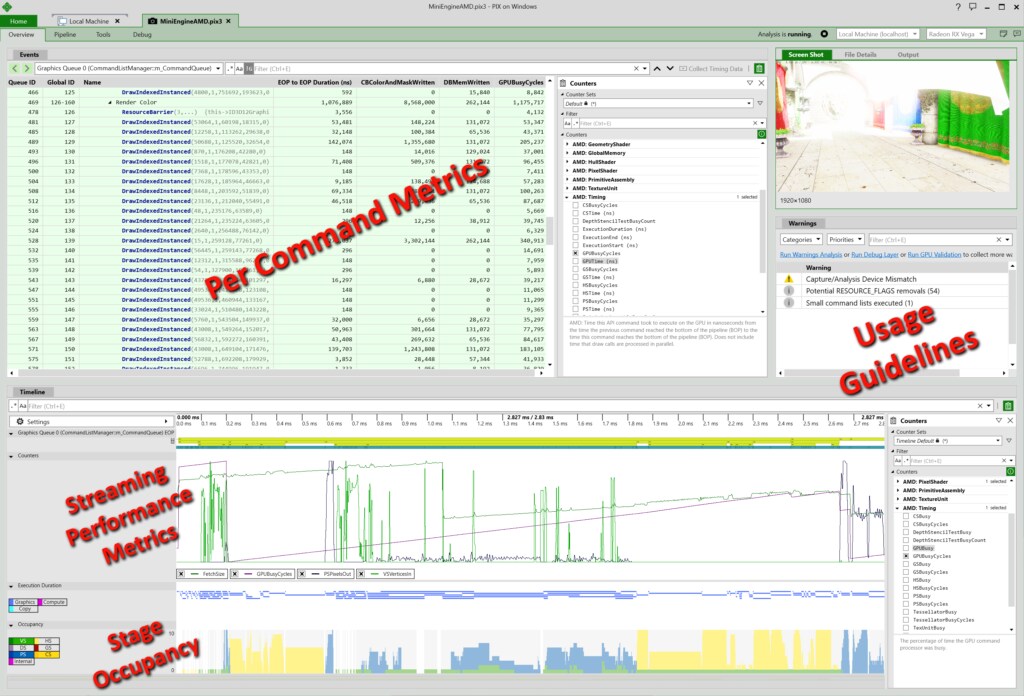
AMD Frame Latency Meter (FLM)
AMD Frame Latency Meter (FLM) measurement tool is a must-have for anyone who wants to measure the response time of their games with mouse events.
Microsoft® PIX is the premiere integrated performance tuning and debugging tool for Windows game developers using DirectX® 12. PIX can enable developers to debug and analyze the performance of Direct3D 12 graphics rendering using high precision timing and hardware-specific GPU performance features.
With the March 2019 release, PIX introduced a new GPU High Frequency Counter graph based on AMD’s Streaming Performance Metrics (SPM) that is supported on current generation AMD GPUs, including: AMD Radeon™ 7, AMD Radeon™ Vega, AMD Radeon™ RX, and the Intel® Core™ i7 Processor with Radeon™ RX Vega M graphics.
The new version of PIX is available at https://devblogs.microsoft.com/pix/download/

Whereas per-command metrics tell you the cumulative amount of time or resources that were spent during a specific command, Streaming Performance Metrics provide a deeper and more insightful look into how time or resource utilization changed during the execution of the command. This can reveal otherwise hidden bottlenecks or spikes in usage that were not apparent or obvious from the per-command metrics.
With this release of PIX, AMD has also updated and improved the depth of data provided by the per-command metrics to include driver-generated work as well. What this means in practice is that you may see additional DirectX® 12 commands issued by the driver. For example, a slow clear may be implemented in the driver as rendering two triangle primitives to the screen, and this will be reflected in visible vertex and primitive data for the clear command. This additional behind-thesscenes data is also included in the Streaming Performance Metrics and Stage Occupancy data.
PIX Stage Occupancy data has also been updated in our recent drivers to provide a higher level of detail and finer granularity for each stage occupied by a command during execution compared to previous AMD GPU drivers.
The functionality to enable the new Streaming Performance Metrics is already shipping in all current generation AMD GPU drivers, and does not require any additional downloads or installation. However, for best results, we suggest downloading the latest drivers for your GPU.